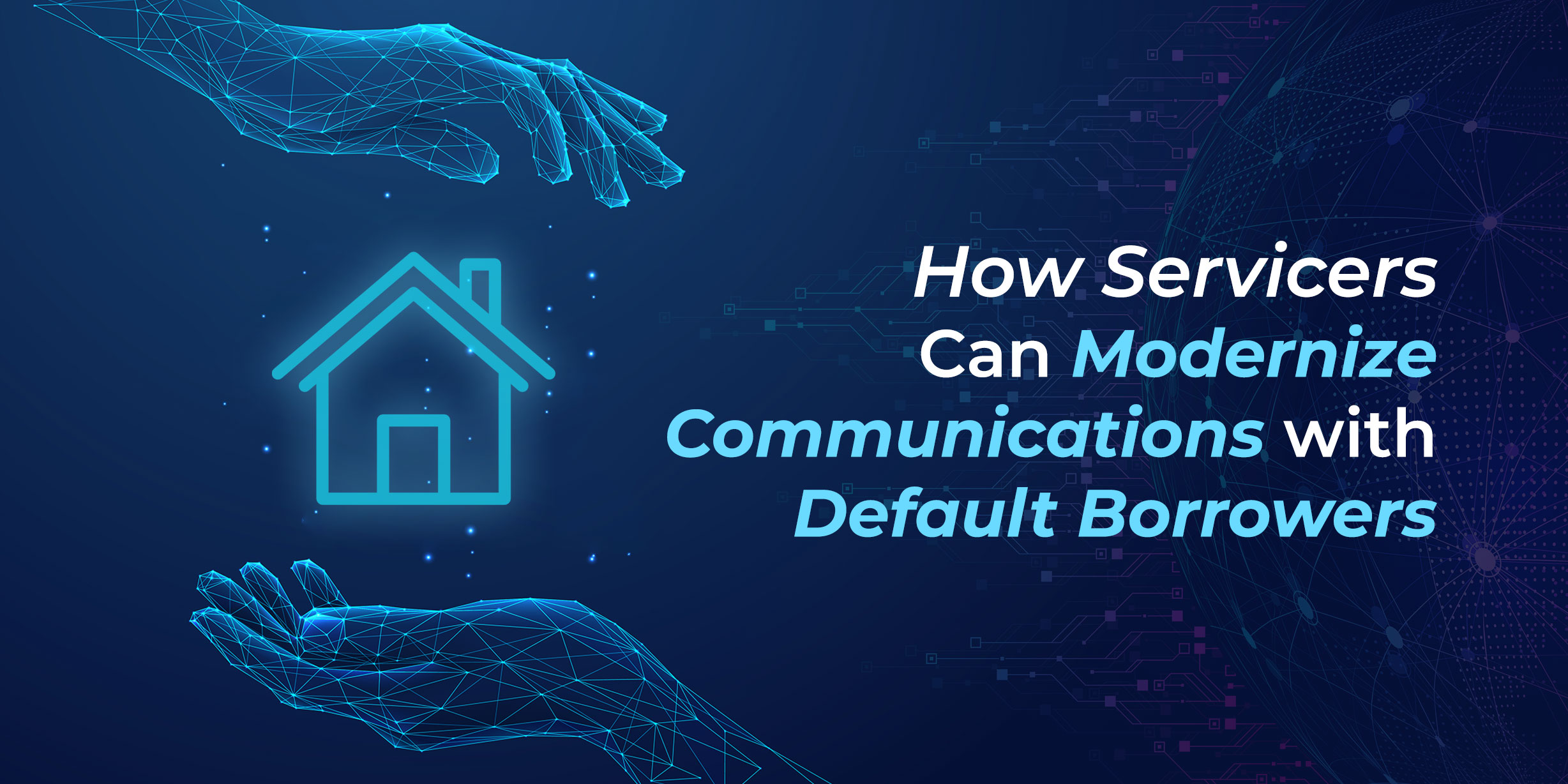Efficient customer engagement is crucial to the success of every mortgage business. It acts as an effective loss mitigation strategy, helping to minimize the impact of risk on both the lender and the borrower.
Customer engagement is also an important regulatory requirement in the US and plays a role in your market reputation. With the launch of the new servicing rule by the HUD, the need to modernize communication and engagement with default borrowers can no longer be ignored. In fact, this can be an opportunity for lenders to capitalize on emerging servicing channels to drive their business forward.
Why Modernize Communication with Default Borrowers in 2023?
Traditionally, mortgage providers are required to meet with a default borrower face to face, a rule that was first codified in 1976. At that time, the industry was mostly operating in a decentralized manner, where most customer engagement took place through local communities and knowledgeable mortgagee staff stationed close to in-demand properties.
However, since the 1990s, lenders started to consolidate their origination and servicing activities in centralized locations in order to cater to a national housing boom, which was no longer limited to select cities or towns. This has caused a great distance to creep in between borrowers and their mortgage providers, yet the old rules governing customer engagement remain.
That is why, in July 2023, the US Department of Housing and Urban Development (HUD) published a newly proposed rule that allows “electronic and other remote communication methods” to communicate with a distressed borrower. The goal is to engage with the customer in a way that’s most likely to receive a response instead of insisting on face-to-face meetings.
Notably, the new HUD proposal highlights emerging forms of interactive communication, such as video conferencing, as a way to engage with default borrowers. This makes sense as technology has come a long way since the previous regulations were established, when smartphones, tablets, and live video communication were not widely in use.
Read More: How to Streamline Default Mortgage Servicing
The Cost of Not Modernizing Communication Systems
The aim of default servicing is to mitigate loss, yet the cost of face-to-face meetings and the logistics surrounding can prove cumbersome, often outweighing the benefits of the loss mitigation efforts. Data collected by the Mortgage Bankers Association (MBA) confirms this.
For example, one lender reported that the cost of complying with face-to-face interview requirements in just 12 months amounted to $3.9 million. The loss mitigation document collection rate during that period was only 5.8%! Another mortgagee servicing over 300,000 Federal Housing Administration (FHA) insured loans sent out 50,000 face-to-face meeting requests in a year, which had a meager 0.028% acceptance rate.
Clearly, there is a need for interactive communication systems that get the response lenders need from borrowers and successfully establish customer engagement. Fortunately, modern technologies like video calling, live chat, email, social media, and the entire gamut of omnichannel communication methods open up new possibilities for lenders.
Read More: Importance of Task-based Workflows in Accelerating Mortgage Servicing
Kickstarting the Modernization Journey
Undoubtedly, transitioning from a decades-old, manual-process-heavy approach to customer engagement will be a challenging task that requires preparation. To that end, lenders must invest in:
1. Evolving the mortgage CRM
Customer relationship management (CRM) systems allow mortgage providers to centralize and orchestrate the records of interactions with a borrower, including defaulting customers. They are closely integrated with loan servicing systems to help keep track of data updates, case files, queries, and notices exchanged with a customer during the end-to-end mortgage tenure. CRM must evolve to make room for new kinds of communication, along with new interaction metadata types.
2. Automating document management
Transitioning to interactive communications like video calls also means less reliance on letters, notices, and traditional document files. Instead, lenders may have to keep track of call and video transcripts, screenshots/images, and any other files shared during these remote conversations. Traditional filing systems will no longer cut it, and there is a need to upgrade to automated document management that can process raw data in different formats, find errors and exceptions, and reconcile them effectively.
3. Integrating interactive communication channels
Modernized communication will fall short of the intended results if they are used sporadically – e.g., by a loan servicing officer interacting with digitally savvy borrowers. Rather, the new channels must be closely integrated with the existing systems and channels. Not only will this require application programming interfaces (APIs) for the integration themselves, but it will also lead to two needs: first, integration security to protect communication across channels, and second, data standardization.
4. Training and upskilling servicing executives
Finally, servicing executives need to be trained in how to use modernized channels and processes. This also signals a mindset shift, as lenders are essentially moving from a slow, asynchronous model to a real-time exchange that elicits immediate response. Knowledge bases will have to be upgraded so that services can keep up with borrower expectations in an interactive communication environment.
Read More: How Intelligent Chatbots Can Attract Gen Z Homebuyers
Modernized Communications is a Post-pandemic Reality
As the HUD correctly notes, COVID-19 ushered in a period of customer engagement innovation that has continued to be the rule rather than the exception even after the pandemic. A partial waiver of the face-to-face meeting requirement has now been extended three times, and lenders now have the opportunity to modernize their default servicing communication systems for good.
Faced with a volatile economy, rising inflation, and a slow housing market, the industry could be looking at a potential foreclosure upswing. A robust default communication capability is essential to mitigate the losses from such scenarios without incurring even more overheads on chasing bad debt. At Nexval, our mortgage tech experts help you prepare for regulatory changes by strengthening the digital bedrock of your servicing function.
Speak with our technology team to know more.


